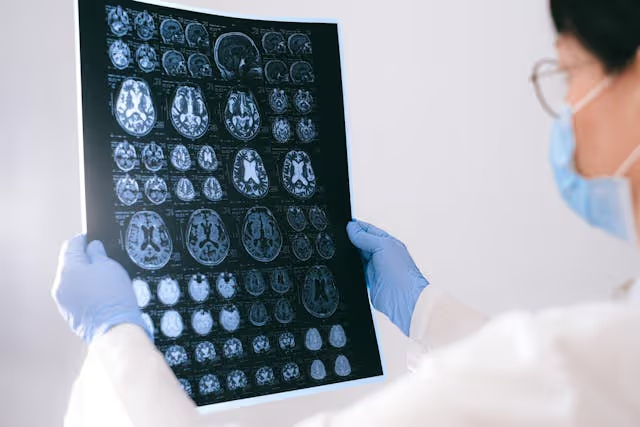Understanding the role of diagnostic imaging in healthcare
February 23, 2025
Exploring the Evolution and Impact of Diagnostic Imaging in Modern Medicine


Understanding Diagnostic Imaging
Diagnostic imaging has revolutionized modern healthcare by offering non-invasive methods to diagnose and monitor a plethora of medical conditions. Through utilizing various technologies such as X-rays, CT scans, MRIs, and much more, healthcare providers can explore the human body's internal structures in great detail. This exploration provides critical insights for disease prevention, precise diagnosis, treatment planning, and monitoring, ultimately contributing to improved patient outcomes.
The Importance of Diagnostic Imaging in Early Detection

Why is diagnostic imaging important in early detection?
Diagnostic imaging is essential for the early detection of medical conditions, enabling healthcare professionals to visualize the internal structures of the body when direct observation isn’t feasible. Techniques such as X-rays, MRI scans, CT scans, and ultrasounds play an increasingly critical role in identifying diseases at an early stage, leading to timely interventions.
For example, early detection of colon cancer can significantly enhance survival rates. Patients diagnosed with colon cancer at an early stage have a 5-year survival rate of 91%, compared to just 11% when the cancer is advanced. Similarly, low-dose CT scans for lung cancer can detect smaller tumors, often leading to a 20% reduction in lung cancer deaths through earlier diagnosis.
Impact on treatment outcomes
The capacity of diagnostic imaging to facilitate early disease detection leads to better treatment outcomes. By allowing for prompt treatment, diagnostic imaging can greatly minimize the invasiveness of necessary interventions. Early-stage detection often requires less aggressive treatment approaches, improving both the patient's quality of life and survival prospects.
In summary, the role of diagnostic imaging is indispensable in sophisticated healthcare, directly linking early detection to enhanced treatment effectiveness and patient survival prospects, ultimately reshaping patient care in profoundly positive ways.
Exploring Main Diagnostic Imaging Modalities

What are the main types of diagnostic imaging?
The main types of diagnostic imaging encompass a variety of techniques, each with unique applications:
| Imaging Technique | Description | Primary Uses |
|---|---|---|
| X-rays | Utilizes ionizing radiation to generate images. | Detects fractures, pneumonia, and other bone-related issues. |
| CT (Computed Tomography) | Combines multiple X-ray images for cross-sectional views. | Identifies tumors, assesses internal injuries, and evaluates conditions like cancers. |
| MRI (Magnetic Resonance Imaging) | Employs strong magnetic fields and radio waves. | Provides detailed images of soft tissues, crucial in diagnosing brain tumors and strokes. |
| PET (Positron Emission Tomography) | Visualizes metabolic processes using radioactive tracers. | Aids in detecting cancers and monitoring treatment responses, particularly in oncology. |
| Ultrasound | Uses high-frequency sound waves for imaging. | Essential in prenatal monitoring and examining organs like the liver and kidneys without radiation exposure. |
Each imaging modality is specifically tailored to visualizing different aspects of the human body, thus playing an integral role in the diagnostic process. Through these diverse techniques, healthcare providers can detect, monitor, and treat medical conditions effectively, significantly enhancing patient care.
The Role of Diagnostic Imaging in Treatment and Care

How does diagnostic imaging impact patient treatment?
Diagnostic imaging is pivotal in patient treatment, facilitating accurate diagnosis, treatment planning, and ongoing health condition monitoring. Various imaging technologies, including X-rays, MRI, and CT scans, offer detailed insights into the body's structures and functions essential for disease detection and injury assessment.
The insights from imaging assist healthcare professionals in customizing treatment plans tailored to individual patient needs. For instance, a CT scan can identify a tumor's size and location, guiding oncologists in selecting appropriate interventions. Furthermore, diagnostic imaging is critical for evaluating the effectiveness of treatments over time, enabling timely adjustments to therapies when necessary.
Additionally, imaging technologies greatly enhance the precision of medical procedures. For example, ultrasound is used to guide biopsies, ensuring accurate tissue sampling. Similarly, MRI assists in planning surgeries by mapping out critical anatomy, minimizing risks. Overall, the integration of medical imaging not only supports diagnosis but also significantly improves the quality and efficacy of patient care, yielding better health outcomes.
The Integral Roles of Radiographers and Radiologists

What role do radiographers and radiologists play in medical imaging?
Radiographers and radiologists are essential components of the medical imaging field. Radiographers operate advanced imaging equipment, such as X-ray machines, MRIs, and CT scanners. Their primary responsibility is to capture accurate diagnostic images while prioritizing patient safety and comfort. Working closely with healthcare teams, radiographers play a pivotal role in treatment planning and patient education. To qualify as a diagnostic radiographer, one typically needs to complete an approved educational program and gain registration with the Health and Care Professions Council (HCPC).
Radiologists, in contrast, specialize in interpreting the images generated by radiographers. They analyze the results to diagnose medical conditions and determine appropriate treatment options. Radiologists bring extensive training and expertise to the process, contributing significantly to optimizing patient care and outcomes. The collaboration between radiographers and radiologists ensures a comprehensive approach to diagnosing and treating various health issues.
Importance of their expertise
The expertise of radiographers and radiologists is crucial in several ways:
- Quality of Imaging: Radiographers' training ensures that imaging procedures are performed correctly, resulting in high-quality images for diagnosis.
- Diagnosis Accuracy: Radiologists' interpretations of images lead to precise diagnoses, guiding subsequent treatment decisions.
- Patient Experience: Both professions focus on making the diagnostic process seamless and reassuring for patients.
- Ongoing Learning: With advancements in medical imaging technology, continuous professional development is vital for both roles to stay updated with the latest techniques and best practices.
This synergy between radiographers and radiologists not only enhances diagnostic accuracy but also significantly impacts patient care and treatment outcomes.
Evolving Technologies and Global Impact

How have advances in diagnostic imaging technology evolved over time?
Advancements in diagnostic imaging technology have dramatically transformed patient care and diagnosis. The journey began with the invention of X-rays, which laid the foundation for modern imaging. This technology evolved with the introduction of CT scans and MRIs, providing healthcare professionals with more detailed and accurate images than traditional methods could offer.
The rise of digital mammography has enhanced breast cancer detection, replacing older analog techniques with superior image quality, especially in dense breast tissues. New methodologies such as elastography allow for better assessments of tissue stiffness, aiding in more precise diagnoses.
Moreover, the integration of imaging into clinical trials has expedited the evaluation of drugs, reinforcing the importance of accurate disease detection. Overall, these continuous technological improvements highlight the critical role that diagnostic imaging plays in facilitating early diagnosis and targeted therapies across various medical conditions.
How does diagnostic imaging contribute to global healthcare challenges?
Diagnostic imaging is essential in navigating global healthcare challenges, particularly in enhancing the accuracy and accessibility of medical diagnoses. Emerging technologies, including artificial intelligence (AI) and the Internet of Medical Things (IoMT), are revolutionizing how diagnostic data is analyzed and utilized. For instance, AI algorithms quickly and accurately interpret imaging data, prompting timely diagnosis and treatment interventions.
Additionally, IoMT devices allow for ongoing health monitoring, which is especially beneficial in regions with limited access to healthcare facilities. These advancements enable proactive management of health conditions, potentially reducing the burden on healthcare systems.
Yet, despite these remarkable benefits, healthcare disparities persist. Challenges such as high costs, interoperability of systems, and data security pose significant barriers to adopting these advanced diagnostic tools globally. Addressing these issues is crucial for ensuring equitable access to fundamental healthcare services.
Conclusion
In conclusion, diagnostic imaging stands as a cornerstone of modern healthcare, with its diverse modalities offering comprehensive insights into the human body's structures and functions. From early disease detection to guiding treatment plans and monitoring patient progress, diagnostic imaging plays an indispensable role in improving health outcomes. As technology continues to advance, the potential to overcome global healthcare challenges grows, promising enhanced accessibility and effectiveness of medical care worldwide.
References
- The Important Role Medical Imaging Plays in Diagnosis and Treatment
- The Vital Role of Diagnostic Imaging in Your Healthcare Journey
- Strengthening medical imaging - World Health Organization (WHO)
- Modern Diagnostic Imaging Technique Applications and Risk ...
- Diagnostic Imaging - MedlinePlus
- Radiology in Healthcare Explained - Lasalle General Hospital
- Understanding Medical Imaging | Know Your Dose
- The Vital Role of Diagnostic Imaging in Modern Healthcare
- The Role of Technology in Diagnosing Disease
- Imaging in Healthcare: A Glance at the Present and a Glimpse Into ...

























































































.jpeg)











































































































































































































.avif)























































.jpeg)

































































.jpeg)














.jpg)









































.jpeg)









































































.avif)




.avif)

















































.avif)








































































































































































